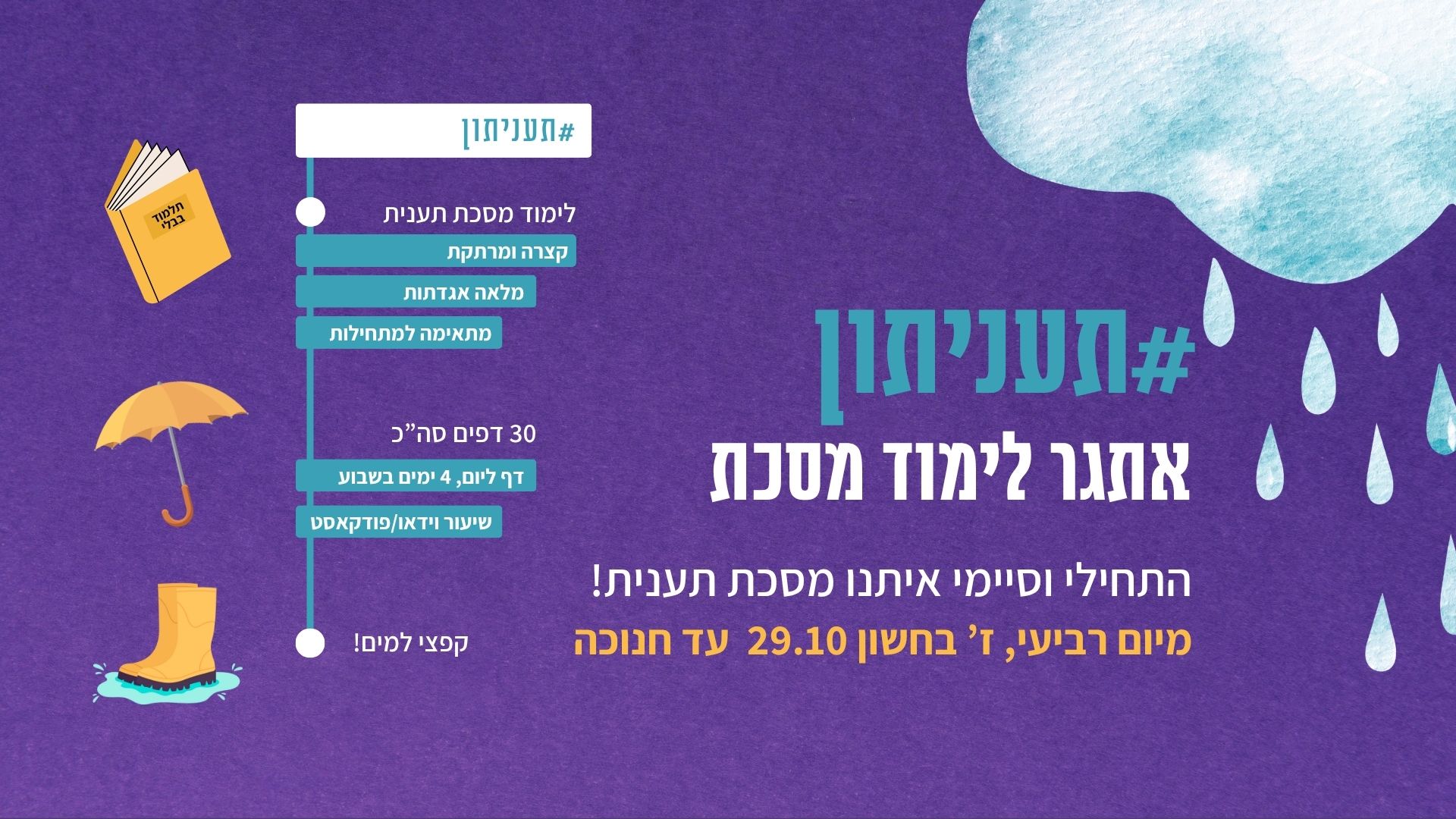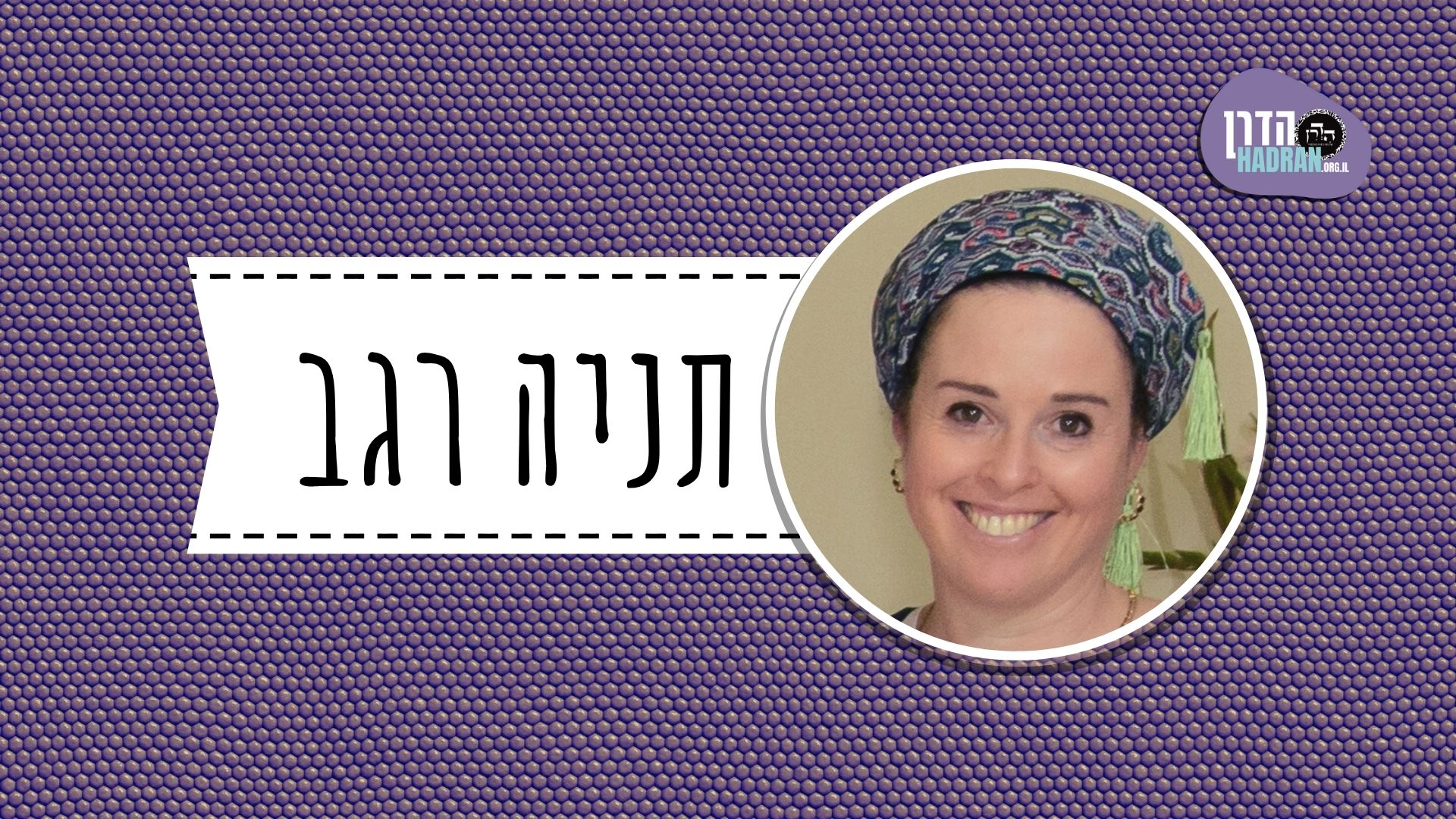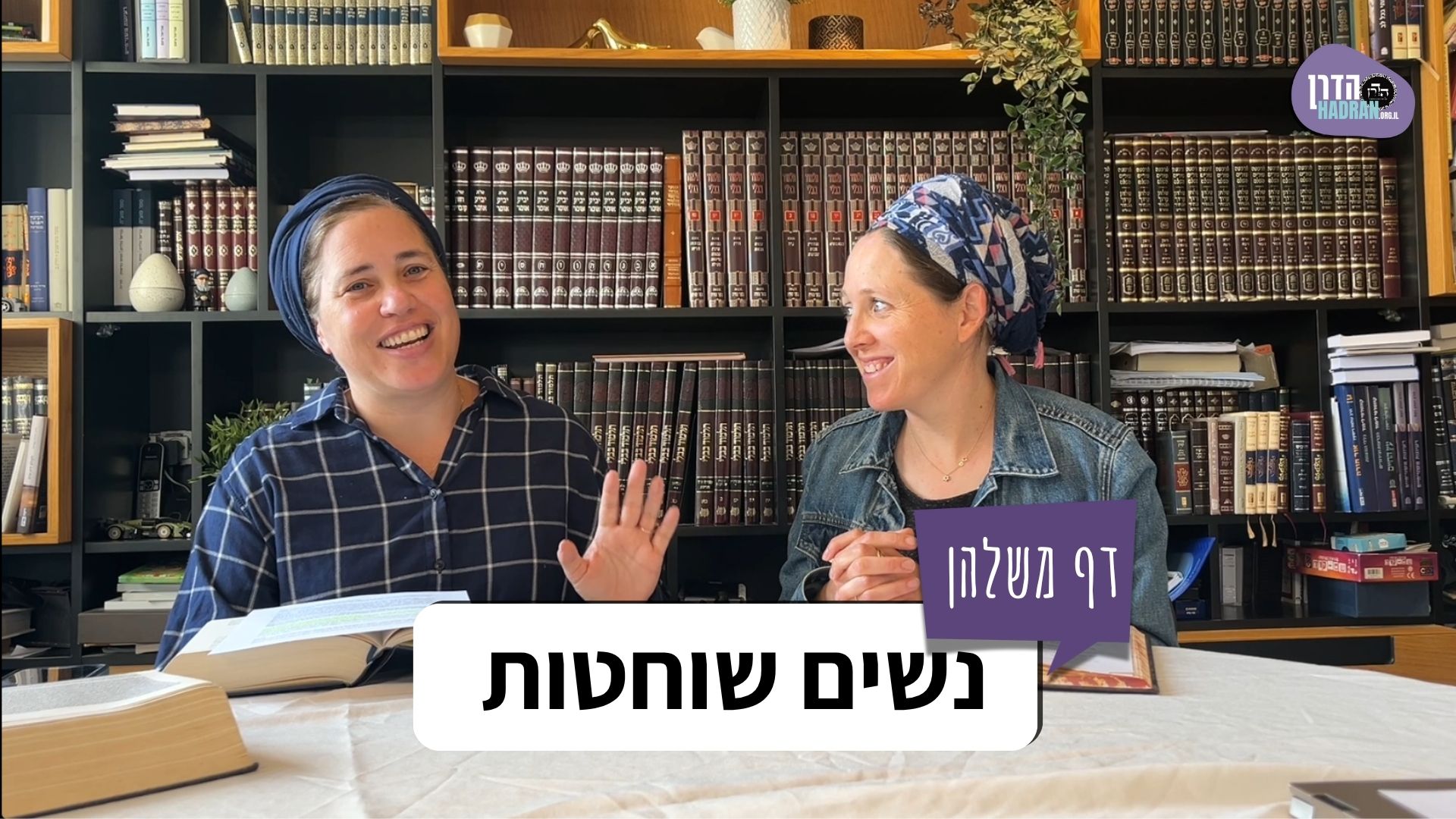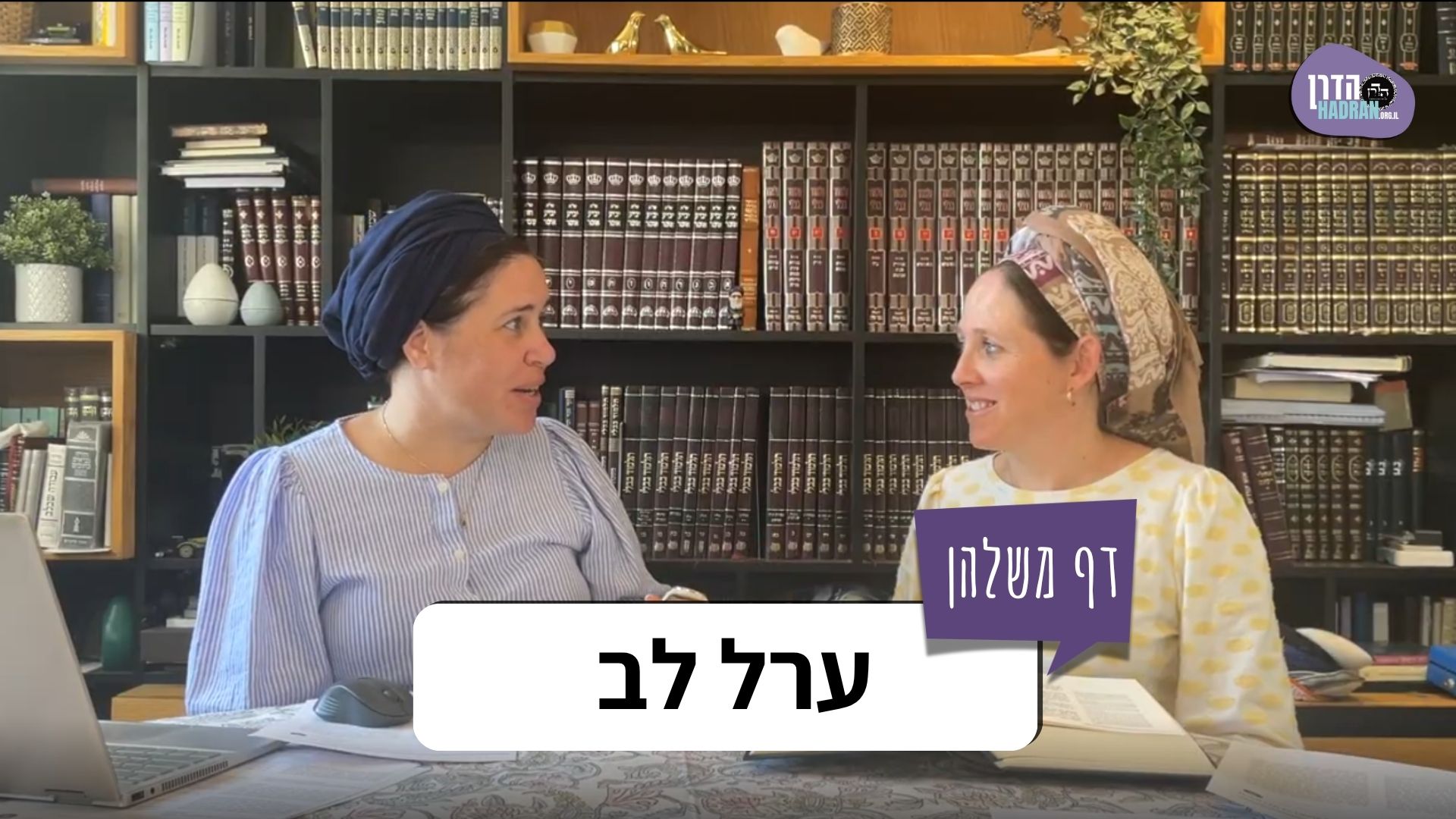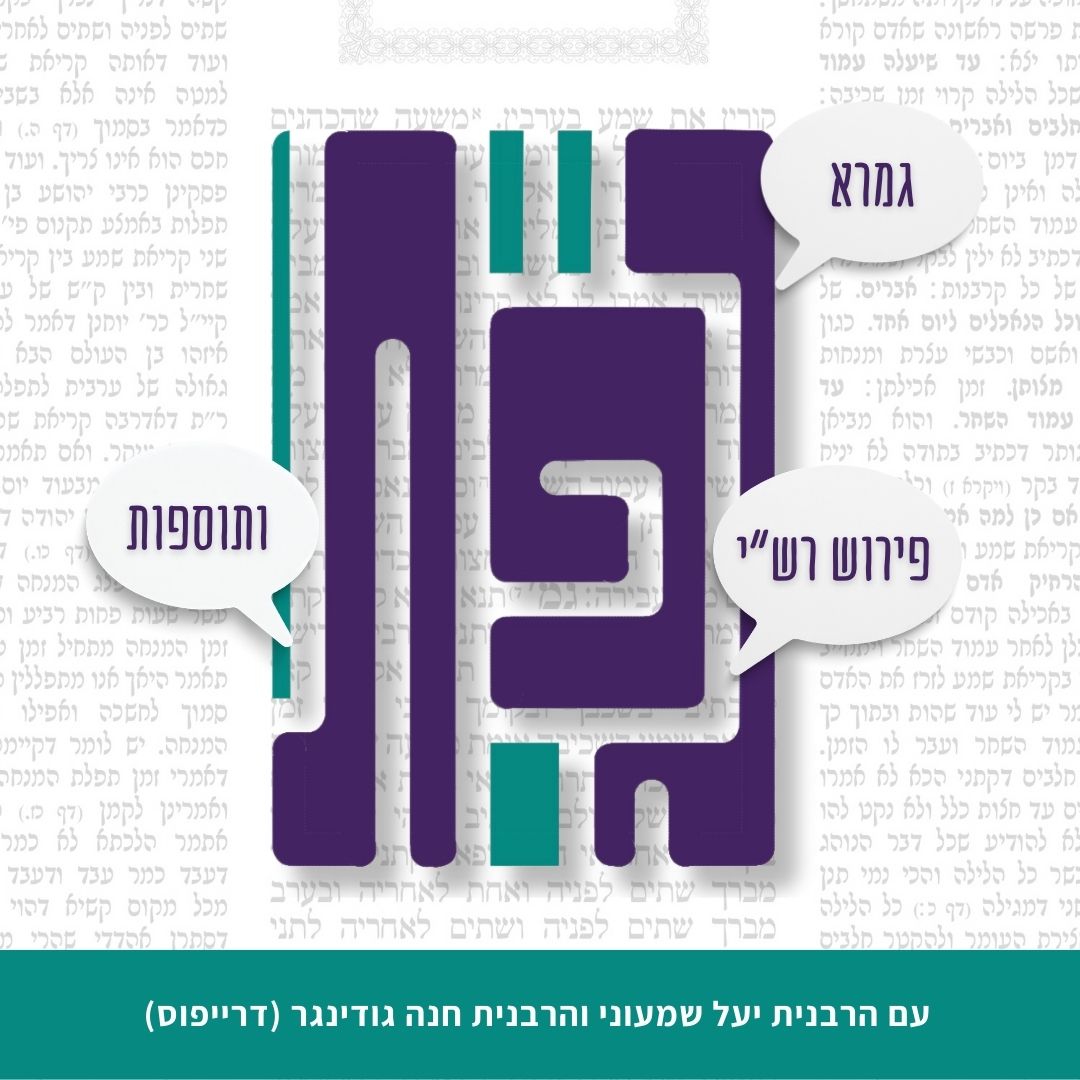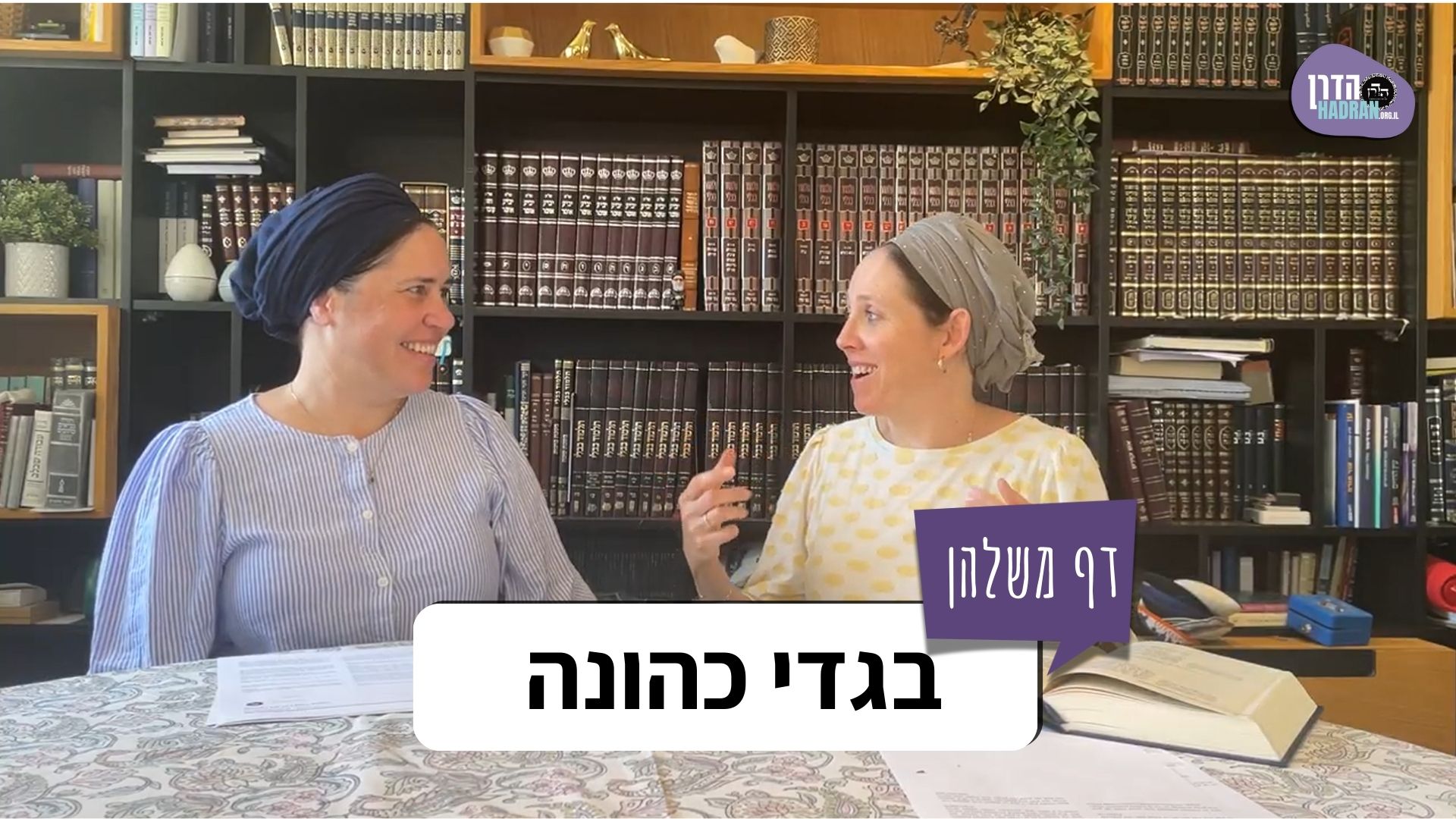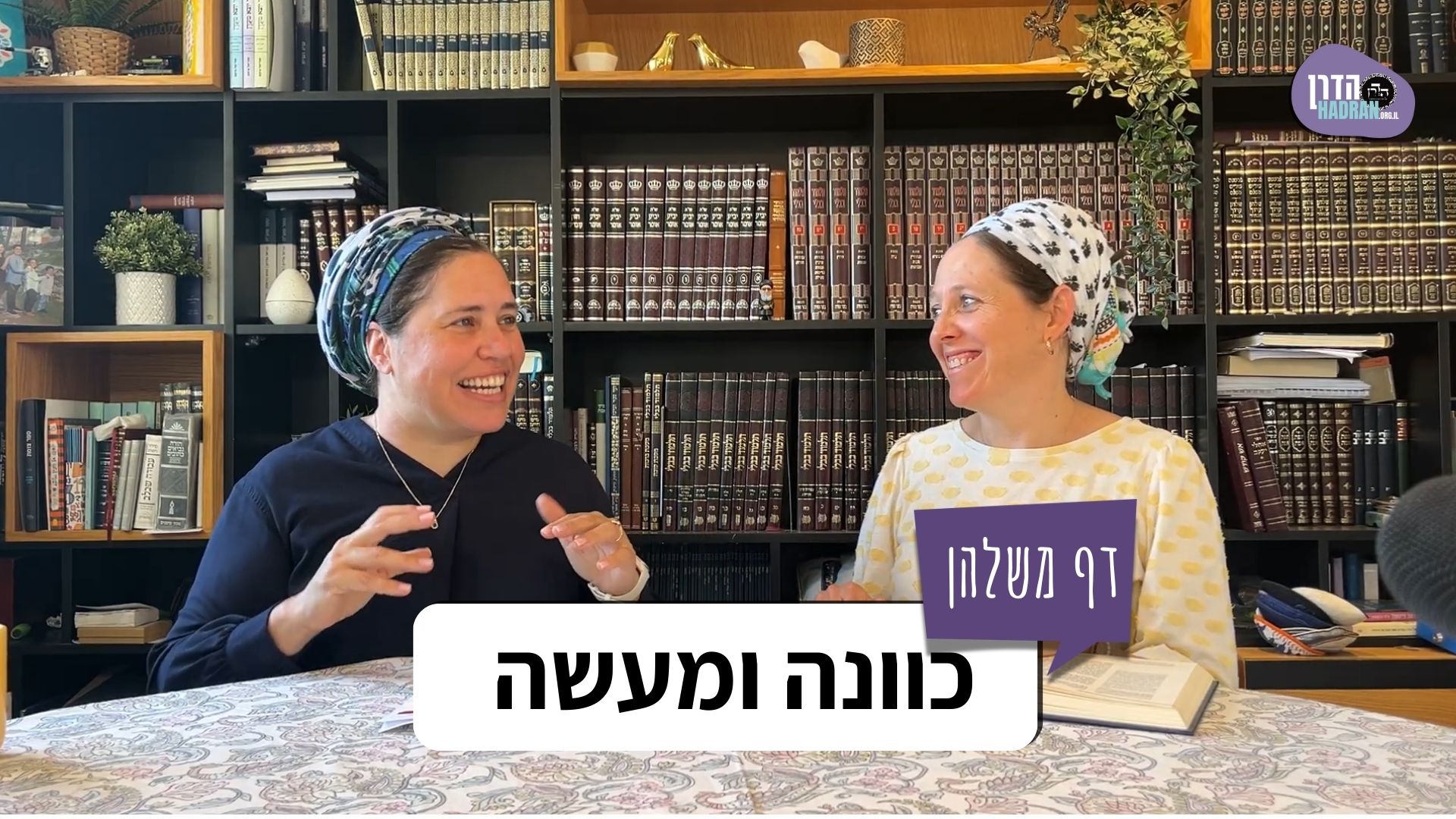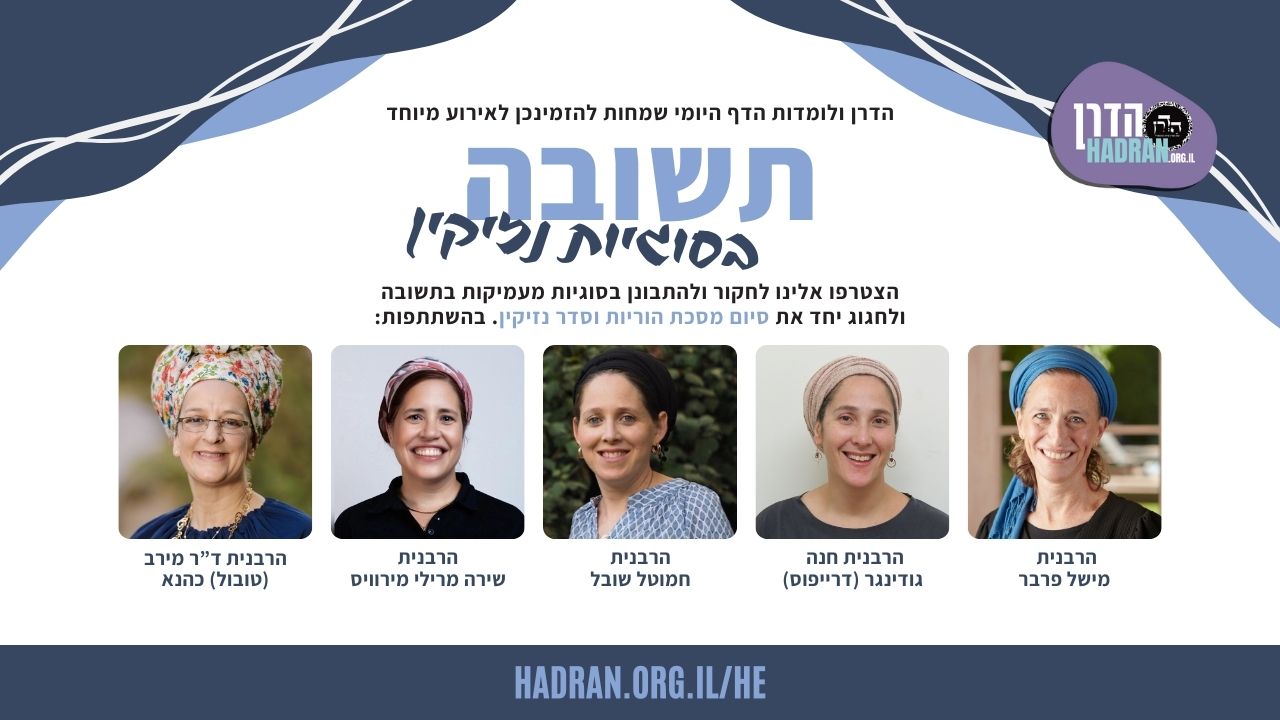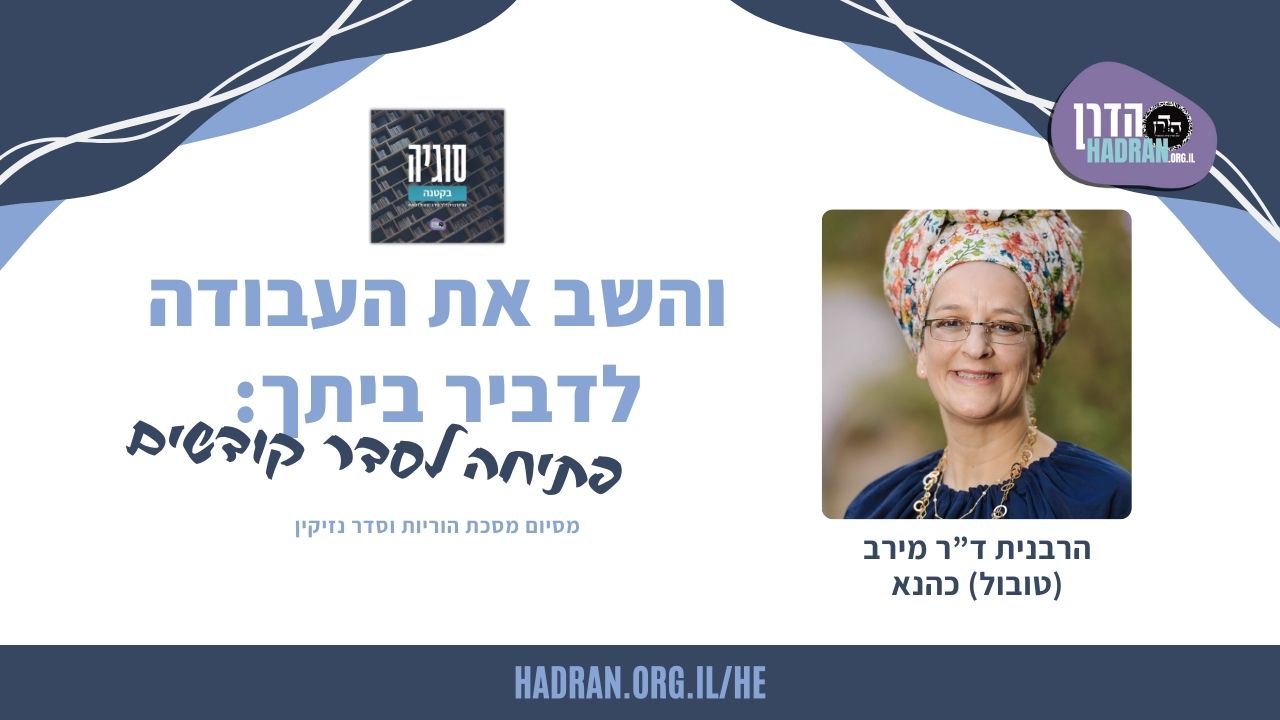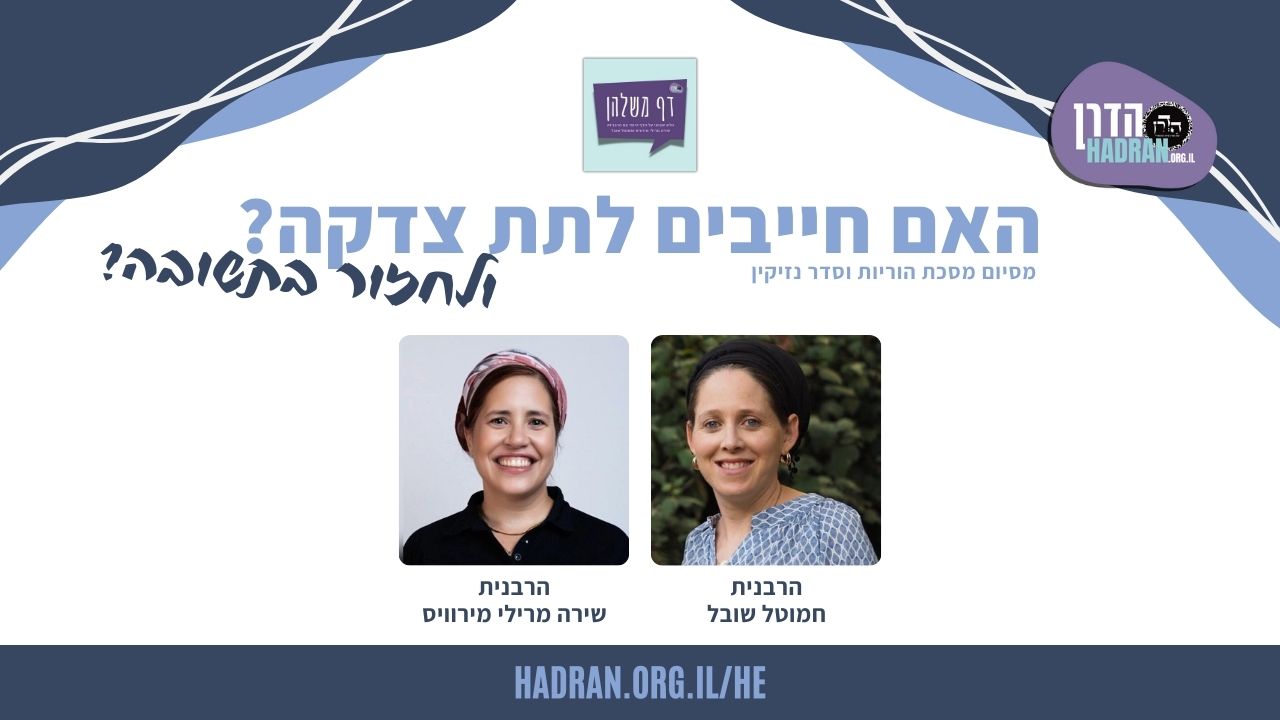מדוע הודלקו משואות רק בחודשים חסרים ולא בחודשים מלאים? למה לא הפוך? כמה סוגים של עצי ארז יש? יש אומרים ארבעה ויש אומרים עשרה. אחד מהם הוא עץ אלמוגים ומביאים מימרה של רב כדי להסביר את האופן המסובך שבו היו מוציאים אותו מהמים. עץ זה היה בעל ערך רב. כל העצים שנעקרו על ידי הגויים בירושלים יוחזרו על ידי הקב”ה – זה נגדרש מהפסוק הנזכר בו פורטו סוגי הארזים השונים. רבי יוחנן אומר מספר אמירות על החשיבות של ללמד תורה לאחרים ולא רק ללמוד. ומוסיף עוד אמירה על כך שהגויים נענשים על הריגת מלמדי תורה כמו רבי עקיבא. מזוהים המקומות המוזכרים במשנה בהם הדליקו את המשואות. מובאת רשימה חלופית – איך זה מתחבר לזה שבמשנה? שתי אפשרויות מובאות כדי להסביר. המרחק בין ההרים מתואר כקצר יותר ממה שהיה ידוע בתקופת האמוראים. איך זה יכול להיות? כדי לתמרץ אנשים לבוא להעיד על הירח החדש, נערכה ארוחה חגיגית בחצר בבית יעזק, שם היה בית הדין חוקר את העדים. אם באו בשבת, אסור היה להם ללכת הביתה, ואפילו לא לצאת מהחצר בגלל שכבר יצאו מתחום שבת בכדי להגיע. אולם מאחר שהדבר ירתיע עדים מלבוא, התיר להם רבן גמליאל ללכת אלפיים אמה לכל כיוון. זה הותר גם עבור קבוצות אחרות של אנשים שצריך לתמרץ, כמו מיילדת, כבאי ואחרים. מה הייתה האטימולוגיה של השם בית יעזק (יעזק או יזק) – האם הייתה לו קונוטציה חיובית או שלילית? אילו שאלות נשאלו מהעדים כדי לוודא שהם דוברי אמת? ברגע שהיו להם עדים טובים, הם עדיין היו שואלים במקצת את האחרים שלא ירגישו שהיה בזבוז זמן שהגיעו ולא יגיעו שוב.
לימוד החודש מוקדש ע”י בט בלקני לכבוד נכדתה, דבורה חנה סרח אייכל.
הלימוד החודש מוקדש לעילוי נשמת הרב ד”ר ריימונד הררי ז”ל, לרגל היארצייט הראשון שלו. בתפקידו כמחנך וכמנהל ישיבה דפלטבוש וכרב קהילה, הוא השפיע על אלפים בחכמתו, בחמימותו, ובמחויבותו הבלתי מתפשרת לתורה..
לימוד השבוע מוקדש ע”י מרק ורנה גולדשטיין לרפואת בן עזרה סטפי בן רנה ועליזה בת שיינה ריאה.
רוצה להקדיש שיעור?

לימוד החודש מוקדש ע”י בט בלקני לכבוד נכדתה, דבורה חנה סרח אייכל.
הלימוד החודש מוקדש לעילוי נשמת הרב ד”ר ריימונד הררי ז”ל, לרגל היארצייט הראשון שלו. בתפקידו כמחנך וכמנהל ישיבה דפלטבוש וכרב קהילה, הוא השפיע על אלפים בחכמתו, בחמימותו, ובמחויבותו הבלתי מתפשרת לתורה..
לימוד השבוע מוקדש ע”י מרק ורנה גולדשטיין לרפואת בן עזרה סטפי בן רנה ועליזה בת שיינה ריאה.
העמקה
רוצה להבין מה באמת קורה מתחת לפני השטח של הסוגיה?
שיעורים, פודקאסטים והרחבות של מיטב המורות שלנו יפתחו לך עוד זוויות וכיווני חשיבה.
חדשה בלימוד הגמרא?
זה הדף הראשון שלך? איזו התרגשות עצומה! יש לנו בדיוק את התכנים והכלים שיעזרו לך לעשות את הצעדים הראשונים ללמידה בקצב וברמה שלך, כך תוכלי להרגיש בנוח גם בתוך הסוגיות המורכבות ומאתגרות.
פסיפס הלומדות שלנו
גלי את קהילת הלומדות שלנו, מגוון נשים, רקעים וסיפורים. כולן חלק מתנועה ומסע מרגש ועוצמתי.
ראש השנה כג
לְמִיטְעֵי, אָמְרִי: הַאי חָסֵר הוּא, וְהַאי דְּלָא עֲבִיד מֵאֶתְמוֹל, מִשּׁוּם דְּלָא אֶפְשָׁר. אוֹ דִלְמָא מָלֵא הוּא, וּבִזְמַנּוֹ עֲבַדוּ.
to err. They will be unsure how to interpret the lighting of the torches, as they will say: Perhaps this month is deficient, i.e., of twenty-nine days, and the reason that the torch sequence was not performed yesterday, on Shabbat eve, is due to the fact that it was impossible to do so on Shabbat. Or perhaps it is a full, thirty-day month, and they are performing the sequence at its proper time. Therefore, the Sages instituted that the torches should be lit only after deficient months, and the absence of this signal means that the month was a full one.
וְלֶיעְבֵּיד בֵּין אַמָּלֵא בֵּין אַחָסֵר, וְכִי מִקְּלַע רֹאשׁ חֹדֶשׁ בְּעֶרֶב שַׁבָּת לָא לֶיעְבֵּיד כְּלָל. וְכֵיוָן דְּלָא עָבְדִינַן מוֹצָאֵי שַׁבָּת וְעָבְדִינַן אַמָּלֵא — מִידָּע יָדְעִי דְּחָסֵר הוּא!
The Gemara suggests: And let them perform the ceremony both for a full, thirty-day month and for a deficient one, and when the New Moon occurs on Shabbat eve, in which case they would have to light the torches after Shabbat, let them not perform it at all. And since the torches are not lit this month at the conclusion of Shabbat, and one normally performs the sequence for a full month, people will know that the month is deficient. In this manner, it should be possible to light the torches for all the months, with this one exception.
אֲפִילּוּ הָכִי אָתוּ לְמִיטְעֵי, אָמְרִי: הַאי מָלֵא הוּא, וְהַאי דְּלָא עָבְדִי — אִיתְּנוֹסֵי הוּא דְּאִיתְּנוּסי.
The Gemara answers: Even so, people might come to err, as they will say: This month is indeed full, and the reason that they are not performing the ceremony is that they were subject to circumstances beyond their control. Therefore, there might still be confusion as to the date of the New Moon that month.
וְלֶיעְבֵּיד אַמָּלֵא, וְלָא לֶיעְבֵּיד אַחָסֵר כְּלָל! אָמַר אַבָּיֵי: מִשּׁוּם בִּיטּוּל מְלָאכָה לָעָם שְׁנֵי יָמִים.
The Gemara asks: And let them perform the ceremony of torches only for a full, thirty-day month, and not perform it for a deficient month at all, in which case there will never be room for error. Abaye said: This cannot be done, because this would lead to a two-day suspension of work for the people, as it was customary to refrain from certain types of work on the New Moon. After a full month there will always be a suspension of work for two days, as the people must abstain from work on the thirtieth of the month in case it is declared the New Moon. However, if the torches are lit for a deficient month, then at least in that case people could return to work the following day. Therefore, the Sages instituted that the torches are lit only for a deficient month.
כֵּיצַד הָיוּ מַשִּׂיאִין מַשּׂוּאוֹת — מְבִיאִין כְּלוֹנְסוֹת כּוּ׳. אָמַר רַב יְהוּדָה, אַרְבָּעָה מִינֵי אֲרָזִים הֵן: אֶרֶז, קַתְרוֹם, עֵץ שֶׁמֶן, וּבְרוֹשׁ. קַתְרוֹם, אָמַר רַב: אַדְרָא. דְּבֵי רַבִּי שֵׁילָא אָמְרִי: מַבְלִיגָא, וְאָמְרִי לַהּ זוֹ גּוּלְמֵישׁ.
§ The mishna taught: How would they light the torches? They would bring long poles [kelonsot] of cedar and other materials that burn well, tie them all together, and set them on fire. Rav Yehuda said that there are four types of cedar: Cedar, katrom, pinewood, and cypress. With regard to the identification of the tree called katrom, Rav said: This is the addera tree. In the school of Rabbi Sheila, they say: This is the mavliga tree. And some say it is the gulmish tree.
וּפְלִיגָא דְּרַבָּה בַּר רַב הוּנָא. דְּאָמַר רַבָּה בַּר רַב הוּנָא, אָמְרִי בֵּי רַב: עֲשָׂרָה מִינֵי אֲרָזִים הֵם, שֶׁנֶּאֱמַר: ״אֶתֵּן בַּמִּדְבָּר אֶרֶז שִׁטָּה וַהֲדַס וְעֵץ שָׁמֶן אָשִׂים בָּעֲרָבָה בְּרוֹשׁ תִּדְהָר וּתְאַשּׁוּר יַחְדָּו״. אֶרֶז — אַרְזָא, שִׁטָּה — תּוּרְנִיתָא, הֲדַס — אַסָּא, עֵץ שֶׁמֶן — אֲפַרְסְמָא, בְּרוֹשׁ — בְּרָתָא, תִּדְהָר — שָׁאגָא, תְּאַשּׁוּר — שׁוּרִיבְנָא.
The Gemara comments: And this opinion of Rav Yehuda disagrees with that of Rabba bar Rav Huna. As Rabba bar Rav Huna said that they say in the school of Rav: There are ten species of cedar, as it is stated: “I will plant in the wilderness the cedar, the acacia tree and myrtle and the pine tree; I will set in the desert cypress, the plane tree, and the larch together” (Isaiah 41:19). The seven species mentioned in this verse are all types of cedars. The Gemara proceeds to identify these trees by their Aramaic names: Cedar is arza, acacia is tornita, myrtle is asa, pine tree is afarsema, cypress is berata, maple is shaga, and box tree is shorivna.
הָנֵי שִׁבְעָה הָווּ! כִּי אֲתָא רַב דִּימִי, אָמַר: הוֹסִיפוּ עֲלֵיהֶם אַלּוֹנִים, אַלְמוֹנִים, אַלְמוּגִּין. אַלּוֹנִים — בּוּטְמֵי, אַלְמוֹנִים — בָּלוּטֵי, אַלְמוּגִּין — כְּסִיתָא. אִיכָּא דְּאָמְרִי: אַרוּנִּים, עַרְמוֹנִים, אַלְמוּגִּין. אַרוּנִּים — עָרֵי, עַרְמוֹנִים — דּוּלְבֵי, אַלְמוּגִּין — כְּסִיתָא.
The Gemara asks: Even if we count all the names in the verse, these are only seven, not ten. When Rav Dimi came from Eretz Israel to Babylonia, he said: They added to them three more types of cedar: Terebinth, oak, and coral wood. The Gemara identifies them: Terebinth is the tree called butmei, oak is balutei, and coral wood is kasita. There are those who say that the additional three types are: Bay tree, plane tree, and coral wood. And their Aramaic names are as follows: Bay tree is arei, plane is dulvei, and coral wood is kasita.
״וְצִי אַדִּיר לֹא יַעַבְרֶנּוּ״ — אָמַר רַב: זוֹ בּוּרְנִי גְּדוֹלָה.
§ Apropos coral, the Gemara cites a relevant verse: “Neither shall a tzi adir be able to cross it” (Isaiah 33:21), i.e., it will not be able to traverse the river that will issue forth from the Temple in the future. What is this tzi adir? Rav said: This is a great ship [burnei] used to collect coral from the sea.
הֵיכִי עָבְדִי? מַיְיתוּ שֵׁית אַלְפֵי גַּבְרֵי בִּתְרֵיסַר יַרְחֵי שַׁתָּא, וְאָמְרִי לַהּ תְּרֵיסַר אַלְפֵי גַּבְרֵי בְּשִׁיתָּא יַרְחֵי שַׁתָּא, וְטָעֲנִי לַהּ חָלָא עַד דְּשָׁכְנָא. וְנָחֵית בַּר אָמוֹרַאי וְקָטַר אֲטוּנֵי דְכִיתָּנָא בִּכְסִיתָא, וְקָטַר לְהוּ בִּסְפִינְתָּא. וְנָטְלִי חָלָא וְשָׁדוּ לְבָרַאי, וְכַמָּה דְּמִדַּלְיָא — עָקְרָא וּמַתְיָא.
The Gemara explains: How do they perform this collection of coral? They bring six thousand men to work for twelve months of the year, and some say they bring twelve thousand men for six months of the year. And they load the ship with sand until it sinks to the bottom of the sea. A diver descends and ties flax ropes around the coral and ties the other ends of the ropes to the boat. And then they take the sand and cast it overboard, and the boat rises once again to the surface. And as it rises, it uproots and brings the coral with it.
וּמַחְלֵיף עַל חַד תְּרֵין בְּכַסְפָּא. תְּלָת פַּרְווֹתָא הָוְיָין: תַּרְתֵּי בֵּי רוֹמָאֵי וַחֲדָא דְּבֵי פָרְסָאֵי. דְּבֵי רוֹמָאֵי מַסְּקָן כְּסִיתָא, דְּבֵי פָרְסָאֵי מַסְּקָן מַרְגָּנְיָיתָא, וּמִקַּרְיָיא: פַּרְווֹתָא דְמַשְׁמְהִיג.
The Gemara comments: And this coral is so precious that it is exchanged for twice its weight in silver. The Gemara further notes: There are three ports in those places. Two belong to the Romans [Armai], and one belongs to the Persians. In the one belonging to the Romans, they raise up coral, whereas in the one belonging to the Persians, they raise up pearls. And the Persian ports are called royal ports.
אָמַר רַבִּי יוֹחָנָן: כׇּל שִׁיטָּה וְשִׁיטָּה שֶׁנָּטְלוּ גּוֹיִם מִירוּשָׁלַיִם, עָתִיד הַקָּדוֹשׁ בָּרוּךְ הוּא לְהַחֲזִירָן לָהּ, שֶׁנֶּאֱמַר: ״אֶתֵּן בַּמִּדְבָּר אֶרֶז שִׁטָּה״, וְאֵין מִדְבָּר אֶלָּא יְרוּשָׁלַיִם, שֶׁנֶּאֱמַר: ״צִיּוֹן מִדְבָּר הָיְתָה וְגוֹ׳״.
With regard to the aforementioned verse, Rabbi Yoḥanan said: Each and every acacia tree that the gentiles took from Jerusalem will be returned to the city by the Holy One, Blessed be He, as it is stated: “I will plant in the wilderness the cedar, the acacia tree and myrtle and the oil tree; I will set in the desert cypress, the plane tree and the larch together” (Isaiah 41:19). And the term wilderness is referring to nothing other than Jerusalem, as it is stated: “Zion is become a wilderness, Jerusalem a desolation” (Isaiah 64:9).
וְאָמַר רַבִּי יוֹחָנָן: כׇּל הַלּוֹמֵד תּוֹרָה וְאֵינוֹ מְלַמְּדָהּ, דּוֹמֶה לַהֲדַס בַּמִּדְבָּר. אִיכָּא דְאָמְרִי: כׇּל הַלּוֹמֵד תּוֹרָה וּמְלַמְּדָהּ בִּמְקוֹם שֶׁאֵין תַּלְמִידֵי חֲכָמִים — דּוֹמֶה לַהֲדַס בַּמִּדְבָּר, דְּחַבִּיב.
And Rabbi Yoḥanan also said: Anyone who studies Torah but does not teach it to others is likened to a myrtle in the wilderness. The myrtle has a pleasant fragrance, but there is nobody to enjoy it in the wilderness. There are those who say a different version of this statement: Anyone who studies Torah and teaches it to others in a place where there are no other Torah scholars is likened to a myrtle in the wilderness, which is especially precious and thoroughly enjoyed by those who find it.
וְאָמַר רַבִּי יוֹחָנָן: אוֹי לָהֶם לַגּוֹיִם, שֶׁאֵין לָהֶם תַּקָּנָה, שֶׁנֶּאֱמַר: ״תַּחַת הַנְּחֹשֶׁת אָבִיא זָהָב וְתַחַת הַבַּרְזֶל אָבִיא כֶסֶף וְתַחַת הָעֵצִים נְחֹשֶׁת וְתַחַת הָאֲבָנִים בַּרְזֶל״. תַּחַת רַבִּי עֲקִיבָא וַחֲבֵירָיו מַאי מְבִיאִין! וַעֲלֵיהֶם הוּא אוֹמֵר: ״וְנִקֵּיתִי דָּמָם לֹא נִקֵּיתִי״.
And Rabbi Yoḥanan further said: Woe to the nations of the world, as they have no remedy for the sins they committed against the Jewish people, as it is stated: “For brass I will bring gold, and for iron I will bring silver, and for wood brass, and for stones iron” (Isaiah 60:17). For all things there is a remedy, as one can always exchange them for an item of equivalent or greater value. However, for Rabbi Akiva and his colleagues, whom the nations put to death, what can one bring to atone for their sin? And with regard to them it is stated: And I will hold them as innocent, but for their blood I will not hold them innocent (see Joel 4:21).
וּמֵאַיִן הָיוּ מַשִּׂיאִין מַשּׂוּאוֹת כּוּ׳ וּמִבֵּית בִּלְתִּין. מַאי בֵּית בִּלְתִּין? אָמַר רַב:
§ The mishna states: And from which mountains would they light the torches? From the Mount of Olives to Sartava, and from Sartava to Gerofina, and from Gerofina to Ḥavran, and from Ḥavran to Beit Baltin. And from Beit Baltin they would not light torches in any other pre-established places. The Gemara asks: What is this place called Beit Baltin? Rav said:
זוֹ בֵּירָם.
This is the town called Biram.
מַאי גּוֹלָה? אָמַר רַב יוֹסֵף: זוֹ פּוּמְבְּדִיתָא. מַאי כִּמְדוּרַת הָאֵשׁ? תָּנָא: כׇּל אֶחָד וְאֶחָד נוֹטֵל אֲבוּקָה בְּיָדוֹ וְעוֹלֶה לְרֹאשׁ גַּגּוֹ.
§ The mishna taught: He would wave the torch back and forth and up and down, until he would see the entire Diaspora before him alight like one large bonfire. The Gemara asks: What is the meaning in this context of the term Diaspora, which certainly cannot be referring to the entire Diaspora across the world? Rav Yosef said: This is referring to the city of Pumbedita in Babylonia. The Gemara further asks. What is the meaning of the phrase: Like one large bonfire? It is taught in a baraita: Each and every individual would take a torch in his hand and ascend to the top of his roof and light it. In this manner, the entire city would present the appearance of a large bonfire.
תַּנְיָא, רַבִּי שִׁמְעוֹן בֶּן אֶלְעָזָר אוֹמֵר: אַף חָרִים וּכְיָיר וּגְדֹר וְחַבְרוֹתֶיהָ. אִיכָּא דְּאָמְרִי: בֵּינֵי וּבֵינֵי הֲווֹ קָיְימִי. אִיכָּא דְּאָמְרִי: לְהָךְ גִּיסָא דְּאֶרֶץ יִשְׂרָאֵל הֲווֹ קָיְימִי. מָר חָשֵׁיב דְּהַאי גִּיסָא, וּמָר חָשֵׁיב דְּהַאי גִּיסָא.
It is taught in a baraita that Rabbi Shimon ben Elazar says: Torches were also lit at Ḥarim, and Kayar and Geder, and its neighboring places. There are those who say that the places added by Rabbi Shimon ben Elazar are located between the places mentioned in the mishna, whereas there are those who say that they are located on the other side of Eretz Yisrael, on the side nearer Babylonia. The Sage in the mishna enumerates the places found on one side of Eretz Yisrael, whereas the Sage in the baraita enumerates the places found on the other side.
אָמַר רַבִּי יוֹחָנָן: בֵּין כׇּל אַחַת וְאַחַת שְׁמוֹנֶה פַּרְסָאוֹת. כַּמָּה הָווּ לְהוּ? תְּלָתִין וְתַרְתֵּין, וְהָא הָאִידָּנָא טוּבָא הָווּ! אָמַר אַבָּיֵי: אִסְתַּתּוֹמֵי אִסְתַּתּוּם לְהוּ דַּרְכֵי.
Rabbi Yoḥanan said: Between each and every one of the stations there was a distance of eight parasangs. The Gemara asks: How many parasangs are these in total? Thirty-two parasangs. The Gemara further asks: Isn’t the distance from the Mount of Olives to Beit Baltin now much greater than thirty-two parasangs? Abaye said: The direct routes have become blocked, and therefore people nowadays must use indirect routes, making the journey much longer.
דִּכְתִיב: ״לָכֵן הִנְנִי שָׂךְ אֶת דַּרְכֵּךְ בַּסִּירִים״, רַב נַחְמָן בַּר יִצְחָק אָמַר מֵהָכָא, דִּכְתִיב: ״נְתִיבוֹתַי עִוָּה״.
The Gemara provides a source for this claim. As it is written: “Therefore, behold, I will hedge up your way with thorns, and make a wall against her, that she shall not find her paths” (Hosea 2:8). Rav Naḥman bar Yitzḥak said: It is derived from here, as it is written: “He has made my paths crooked” (Lamentations 3:9), which indicates that over the course of the exile the routes have become longer.
מַתְנִי׳ חָצֵר גְּדוֹלָה הָיְתָה בִּירוּשָׁלַיִם וּבֵית יַעְזֵק הָיְתָה נִקְרֵאת, וּלְשָׁם כׇּל הָעֵדִים מִתְכַּנְּסִין. וּבֵית דִּין בּוֹדְקִין אוֹתָם שָׁם. וּסְעוּדוֹת גְּדוֹלוֹת עוֹשִׂין לָהֶם, בִּשְׁבִיל שֶׁיְּהוּ רְגִילִין לָבֹא.
MISHNA: There was a large courtyard in Jerusalem, which was called Beit Ya’zek. And there all the witnesses coming to testify about the new moon would gather, and the court of seventy-one judges would examine them there. And they would prepare great feasts for them, so that they would be willing and accustomed to coming and submitting their testimony.
בָּרִאשׁוֹנָה לֹא הָיוּ זָזִין מִשָּׁם כׇּל הַיּוֹם. הִתְקִין רַבָּן גַּמְלִיאֵל הַזָּקֵן שֶׁיְּהוּ מְהַלְּכִין אַלְפַּיִם אַמָּה לְכׇל רוּחַ.
Initially, when witnesses would arrive on Shabbat from a distant place, they would not move from there all day, as they had left their Shabbat limit, and it was consequently prohibited for them to walk more than four cubits in any direction once they had completed their mission. Concerned that this limitation would discourage witnesses from coming, Rabban Gamliel the Elder instituted that the witnesses be permitted to walk two thousand cubits in each direction.
וְלֹא אֵלּוּ בִּלְבַד, אֶלָּא אַף חֲכָמָה הַבָּאָה לְיַילֵּד, וְהַבָּא לְהַצִּיל מִן הַדְּלֵיקָה וּמִן הַגַּיִיס וּמִן הַנָּהָר וּמִן הַמַּפּוֹלֶת — הֲרֵי אֵלּוּ כְּאַנְשֵׁי הָעִיר, וְיֵשׁ לָהֶם אַלְפַּיִם לְכׇל רוּחַ.
The mishna continues: And not only these witnesses are granted two thousand cubits from their new place, but this applies also to a midwife who comes to deliver a child, and one who comes to rescue Jews from a fire, from an invasion of gentile troops, from a flooding river, or from the collapse of a building. All these are considered like the inhabitants of the city where they arrive, and therefore they have two thousand cubits in each direction.
גְּמָ׳ אִיבַּעְיָא לְהוּ: ״בֵּית יַעְזֵק״ תְּנַן, אוֹ ״בֵּית יָזֵק״ תְּנַן? ״בֵּית יַעְזֵק״ תְּנַן — לִישָּׁנָא מְעַלְּיָא הוּא, דִּכְתִיב: ״וַיְעַזְּקֵהוּ וַיְסַקְּלֵהוּ״, אוֹ דִלְמָא ״בֵּית יָזֵק״ תְּנַן — לִישָּׁנָא דְצַעֲרָא הוּא, כְּדִכְתִיב: ״וְהוּא אָסוּר בָּאזִיקִּים״?
GEMARA: A dilemma was raised before the Sages: What is the correct reading of the mishna? Did we learn: Beit Ya’zek, or did we learn: Beit Yazek? The Gemara explains the difference between these two versions. Did we learn: Beit Ya’zek, which is an lofty term, indicating that it was a fine place where the witnesses had a pleasant experience, as it is written: “And he dug it [vaye’azzekehu] and cleared it of stones” (Isaiah 5:2), which shows that the root a-z-k denotes improvement? Or perhaps we learned: Beit Yazek, which is a term of distress, reflecting the fact that the witnesses who arrived there on Shabbat were not permitted to move from there all day, as it is written: “And he was bound with chains [bazikim]” (Jeremiah 40:1).
אָמַר אַבָּיֵי, תָּא שְׁמַע: סְעוּדוֹת גְּדוֹלוֹת הָיוּ עוֹשִׂין לָהֶם שָׁם, כְּדֵי שֶׁיְּהוּ רְגִילִים לָבוֹא. דִּלְמָא תַּרְתֵּי הֲווֹ עָבְדִי בְּהוּ.
Abaye said: Come and hear the mishna: They would prepare great feasts for them there, so that they would be accustomed to come and submit their testimony. This indicates that the witnesses were made welcome, in accordance with the name Beit Ya’zek. The Gemara rejects this argument: Perhaps they performed two practices for them, i.e., they provided feasts but they also restricted their movement. Therefore, there is no proof from the mishna for this version of the name.
מַתְנִי׳ כֵּיצַד בּוֹדְקִין אֶת הָעֵדִים? זוּג שֶׁבָּא רִאשׁוֹן — בּוֹדְקִין אוֹתוֹ רִאשׁוֹן. וּמַכְנִיסִין אֶת הַגָּדוֹל שֶׁבָּהֶן, וְאוֹמְרִין לוֹ, אֱמוֹר כֵּיצַד רָאִיתָ אֶת הַלְּבָנָה: לִפְנֵי הַחַמָּה, אוֹ לְאַחַר הַחַמָּה? לִצְפוֹנָהּ, אוֹ לִדְרוֹמָהּ? כַּמָּה הָיָה גָּבוֹהַּ, וּלְאַיִן הָיָה נוֹטֶה, וְכַמָּה הָיָה רָחָב. אִם אָמַר לִפְנֵי הַחַמָּה — לֹא אָמַר כְּלוּם.
MISHNA: How do they examine the witnesses who come to testify about the new moon? They deal with them in order, as the pair of witnesses that arrives first they examine first. They bring in the greater of the two witnesses, and they say to him: Say how you saw the moon. Was it in front of the sun or behind the sun? To its north or to its south? How high was the moon over the horizon, and in which direction did it tilt? And how wide was it? If, for example, he said that he saw the moon in front of the sun, he has not said anything of substance, as this is impossible and therefore he is either mistaken or lying.
וְאַחַר כָּךְ הָיוּ מַכְנִיסִין אֶת הַשֵּׁנִי וּבוֹדְקִין אוֹתוֹ. אִם נִמְצְאוּ דִּבְרֵיהֶם מְכֻוּוֹנִים — עֵדוּתָן קַיֶּימֶת. וּשְׁאָר כׇּל הַזּוּגוֹת, שׁוֹאֲלִין אוֹתָן רָאשֵׁי דְבָרִים. לֹא שֶׁהָיוּ צְרִיכִים לָהֶם, אֶלָּא כְּדֵי שֶׁלֹּא יֵצְאוּ בְּפַחֵי נֶפֶשׁ, בִּשְׁבִיל שֶׁיְּהוּ רְגִילִים לָבוֹא.
And after they finish hearing the first witness’s testimony, they would bring in the second witness and examine him in a similar manner. If their statements match, their testimony is accepted and the court sanctifies the New Moon. And the court then asks all the other pairs of witnesses certain general matters, without probing into all the details. They do this not because they require the additional testimony, but so that the witnesses should not leave disappointed, and so that the witnesses should be accustomed to coming to testify, and will not hesitate to come the next time, when they might be needed.
גְּמָ׳ הַיְינוּ לִפְנֵי הַחַמָּה, הַיְינוּ לִצְפוֹנָהּ; הַיְינוּ לְאַחַר הַחַמָּה, הַיְינוּ לִדְרוֹמָהּ! אָמַר אַבָּיֵי: פְּגִימָתָהּ — לִפְנֵי הַחַמָּה, אוֹ לְאַחַר הַחַמָּה? אִם אָמַר לִפְנֵי הַחַמָּה — לָא אָמַר כְּלוּם.
GEMARA: The Gemara asks: In front of the sun is the same as to its north, and behind the sun is the same as to its south. Why would the court ask the witnesses both sets of questions? Abaye said: The first question does not refer to the moon’s position relative to the sun, but to the concave side of the moon, whether it was before the sun, pointing toward it, or behind the sun, pointing away from it. If he said that it was before the sun, he has said nothing.
דְּאָמַר רַבִּי יוֹחָנָן, מַאי דִּכְתִיב: ״הַמְשֵׁל וָפַחַד עִמּוֹ עוֹשֶׂה שָׁלוֹם בִּמְרוֹמָיו״, מֵעוֹלָם לֹא רָאֲתָה חַמָּה פְּגִימָתָהּ שֶׁל לְבָנָה, וְלֹא פְּגִימָתָהּ שֶׁל קֶשֶׁת. פְּגִימָתָהּ שֶׁל לְבָנָה — דְּחָלְשָׁה דַּעְתַּהּ. פְּגִימָתָהּ שֶׁל קֶשֶׁת — דְּלָא לֵימְרוּ עוֹבְדֵי הַחַמָּה
As Rabbi Yoḥanan said: What is the meaning of that which is written: “Dominion and fear are with Him, He makes peace in His high places” (Job 25:2)? It means that the sun has never seen the concave side of the new moon, nor has it ever seen the concave side of a rainbow, both of which always face away from the sun. It has never seen the concave side of the moon, as the moon would be distressed by a sense of inadequacy if its concave side faced the sun. Therefore the sun sees only the full roundness of its convex side. In this way He makes peace in His high places between the sun and the moon. Furthermore, the sun has never seen the concave side of a rainbow, so that the worshippers of the sun not say, as though the sun is a god,

